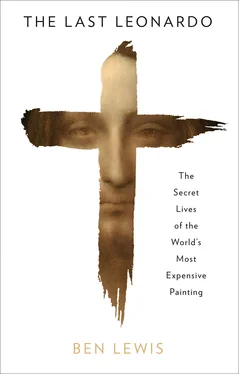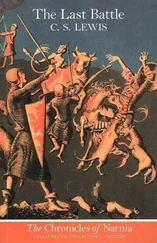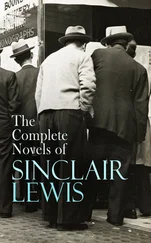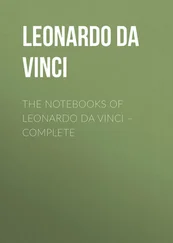1 ...6 7 8 10 11 12 ...18 Leonardo would probably have sent one of his teenage apprentices to buy the pigments, a shopping list in his hand. The artist’s notebooks contain to-do lists, often compiled before a long journey, which give an indication of the errands his ‘boys’ had to run. One, from 1490, reminds the apprentice to get hold of ‘a book that treats of Milan and its churches, which is to be had at the stationers on the way to Cordusio [a piazza in the centre of the city]’. Another, from the years 1508 to 1510, quite possibly the time when Leonardo began to work on the Salvator Mundi , lists ‘boots, stockings, comb, towel, shoelaces, penknife, pens, gloves, wrapping paper, charcoal, spectacles with case, firestick, fork, boards, sheets of paper, chalk, wax, forceps …’ This list may refer to items he had already bought from Milan’s shopkeepers and kept in his studio, but Leonardo does add a note about one thing that he clearly didn’t have: ‘Get hold of a skull.’
For the Salvator Mundi , the apprentice would have had only a small number of pigments on his list, because this painting was made with remarkably few colours: lead white, lapis lazuli, lead tin yellow, vermilion, red iron oxide, carbon and charcoal black, bone black and umber. Back in the studio, the assistants would then have to grind the colours to create a fine powder. However, on this occasion, as later restoration showed, they didn’t do a very thorough job: the brilliant blue grains of the lapis lazuli were rather coarse compared to those in Leonardo’s other paintings.
There was probably a cartoon by Leonardo for the entire composition of the Salvator . This would have been pricked with tiny holes, or spolveri . The cartoon was laid on top of the panel, dusted with fine powder and then removed. An outline of the composition, traced by the dark dust seeping through the pinpricks, remained. Microscopic photographs of the Salvator Mundi have revealed a handful of tiny black dots, but only enough to raise the possibility, not the certainty, of a cartoon. The artist definitely used a pair of compasses to make the circle of the orb, because there is a hole where the compass point went in. Then another layer of underpainting was added in thin, semi-transparent washes of browns and blacks, some derived from charred wood, others from charred bones.
Leonardo was a member of the Arte dei Medici, Speziali e Mercai – the Guild of Doctors, Apothecaries and Mercers. He had his own recipes for making colours, and he listed many of them in his notebooks. That was unusual for a Renaissance painter, but it fits our knowledge of Leonardo the artist-scientist. The master of light and shade was particularly interested in the variety of ways he could mix colour for shadows: ‘Take green [i.e. malachite] and mix it with bitumen, and this will make the shadows darker. And for lighter shades mix green with yellow ochre, and for even lighter green with yellow, and for the highlights pure yellow. Then take green and turmeric together and glaze everything with it … to make a beautiful red take cinnabar or red chalk or burnt ochre for the dark shadows, and for the lighter ones red chalk and vermilion, and for the highlights pure vermilion, and then glaze with fine lake.’
We don’t know how the artist of the Salvator Mundi prepared his palette, but there is a description by Vasari of the way another artist, who was taught in the same studio as Leonardo, did. Lorenzo di Credi and Leonardo were both trained by the Florentine master Andrea Verrocchio, and sometimes worked on the same pictures together. Di Credi, says Vasari, ‘made on his palettes a great number of colour mixtures, so that they went gradually from the lightest tint to the darkest, with exaggerated and truly excessive regularity, so that sometimes he had twenty-five or thirty on his palette, and for each of them, he kept a separate brush’. Such preparation would also have been necessary for the delicate, painstaking and time-consuming manner in which the Salvator Mundi was painted.
Now Leonardo could pick up his brush and begin to paint – should he have had the inclination, of which we cannot be certain. Unlike every other picture Leonardo is widely recognised to have executed after his fame was established, there is no documentary evidence that his hand ever painted the Salvator . That is not in itself an unusual problem for a Renaissance painting. Thousands of artworks before 1700 were unsigned and undated, leaving art historians with thousands of picture-puzzles to solve. The tool of connoisseurship was developed two centuries ago specifically to tackle this problem. But it is a process which art dealers such as Robert Simon and Alex Parish cannot undertake on their own, since however gifted they might be as connoisseurs, they are potentially compromised by commercial motivations. Thus, it was time to call in the experts.
Martin Kemp is a powerful academic, who positions himself a streetwise scholar, resistant to the elitism of the art world, not afraid to defend his corner. When he speaks, the sentences are elegantly formed and the insights – usually about Leonardo – are admirably precise, but the delivery is stern, as if to ward off anyone who might disagree.
Despite all his decades of scholarly study, he tells journalists modestly that he is just in ‘the Leonardo business’, although he has written an autobiographical account of his adventures in it, Living with Leonardo . He professes to be understanding of, even apologetic towards, people who have misunderstood the artist to whom he has dedicated his academic career: ‘It is worth remembering that many of those who have developed untenable Leonardo theories have invested a large amount of time and emotional commitment in their researches,’ he once wrote sympathetically. ‘I have endeavoured to respond in an understanding manner, although I fear I may have been overly abrupt on occasion.’ 1
Kemp first studied the sciences at Cambridge University before switching to history of art – an early change of course which some of his academic rivals have used against him, but which placed him in a well-nigh perfect position for the study of the ultimate artist-scientist. He taught at various art history departments in Britain and North America before becoming a professor at Oxford in the 1990s. In 1981 his masterwork was published, Leonardo da Vinci: The Marvellous Works of Nature and Man . It slotted seamlessly into over a century of Leonardo historiography by bringing together Leonardo’s scientific studies and his artistic career.
From Giorgio Vasari, the sixteenth-century Florentine author of Lives of the Artists , until the nineteenth-century essayist, novelist, literary theorist and art critic Walter Pater, Leonardo scholars had focused almost entirely on the paintings. That changed in 1883, when the reclusive German Leonardist Jean Paul Richter published meticulous transcriptions of Leonardo’s papers organised according to themes, such as his writings on art, mechanics, anatomy and water, as well as his letters. Richter’s apposite choice of title was The Literary Works of Leonardo da Vinci . In the 1930s Kenneth Clark contributed a useful catalogue of the Leonardo drawings held in the British Royal Collection and a biography, but that was a sideshow compared to the monumental post-war work of Carlo Pedretti, the Italian professor of Leonardo studies at UCLA who taught himself to read Leonardo’s handwriting as a teenager, and who at the height of his fame would arrive for lectures in a helicopter. In Leonardo: A Study in Chronology and Style , published in 1973, Pedretti arranged around seven thousand surviving pages of Leonardo’s twenty-five extant notebooks in a convincing chronological order.
Читать дальше












